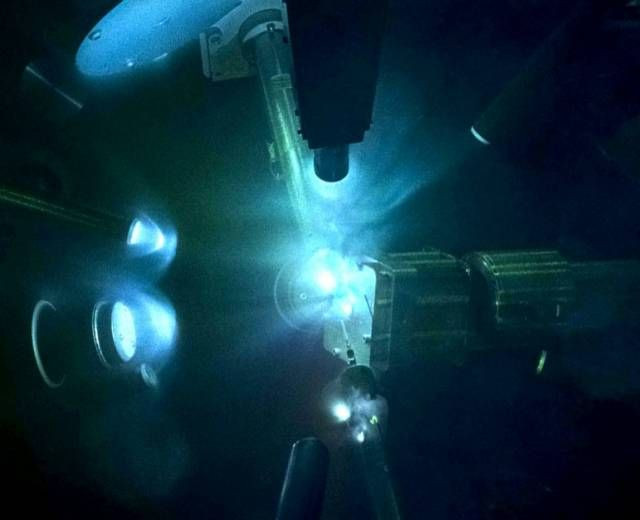High-Power Laser Experiments Could Shed More Light On Super-Earth Interiors

Scientists are conducting high-power laser experiments that could simulate extreme conditions found deep inside Super-Earths and shed more light on the structural and chemical makeup of these massive bodies.
Super-Earths are those rocky planets that are nearly three times larger than our Earth, but a little smaller than Neptune, the next-biggest planet in our Solar System. Astronomers have spotted more than 2000 such planets, but they still need more information to better understand their nature and properties.
This is because all Super-Earths orbit beyond the outer-reaches of our stellar neighborhood and we don’t have a close analogous to study directly. In order to analyze the structure and composition of these exoplanets, scientists need to study behaviour of elements at their core where pressures are ultrahigh — more than 10 times of what are found at the center of the Earth.
Though the pressure level inside these bodies is too high to be modeled with conventional techniques, the new, laser-backed technique has given a ray of hope to Princeton University scientists looking to simulate the interior of large, rocky exoplanets.
In a recent demonstration of the method, an intense beam of laser was blasted at two samples of iron sitting between diamond pieces for a few billionths of a second. Both samples were alloyed with different levels of silicon as 90% of the Earth’s core is made up of iron and the remaining 10% includes lighter silicon-like elements something that could even apply to rocky, Super-Earths.
As the beam of laser was directed, extreme levels of pressure — at 1,314 gigapascals (GPa) — were created. These were the highest levels ever to be simulated as no other experiment of this kind had gone three to four times higher than 300 GPa or 3 million times the pressure found at the surface of the Earth in the past.
Notably, the resulting diffraction from the X-ray experiment revealed the crystal structure and density of the samples. “Knowledge of the crystal structure is the most fundamental piece of information about the material making up the interior of a planet, as all other physical and chemical properties follow from the crystal structure,” lead author June Wicks said in a statement.
As per the researchers, the crystal structure appeared to be changing with the increase in silicon content from one sample to another, while density was two and a half times as dense as Earth’s surface at highest pressures. This, as they said, was higher than the density of pure iron even at highest pressure levels.
“A pure iron core is not realistic, as the process of planetary formation will inevitably lead to the incorporation of significant amounts of lighter elements,” study co-author Thomas Duffy stated. “Our study is the first to consider these more realistic core compositions.”
Moving ahead, the team plans to look into how other lighter elements like carbon and sulfur could change the structure and density of iron in high-pressure conditions like these. “Previously, scientists were restricted to either theoretical calculations or long extrapolations of low-pressure data," Duffy added. But now, "the ability to perform direct experiments allows us to test theoretical results and provides a much higher degree of confidence in our models for how materials behave under these extreme conditions.”
The study, titled “Crystal structure and equation of state of Fe-Si alloys at super-Earth core conditions,” was published April 25 in the journal Science Advances.
© Copyright IBTimes 2024. All rights reserved.





















